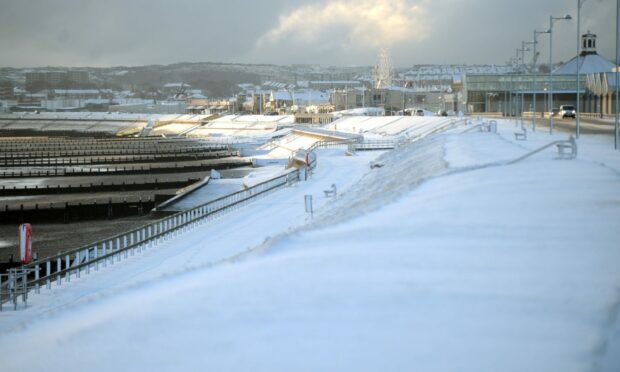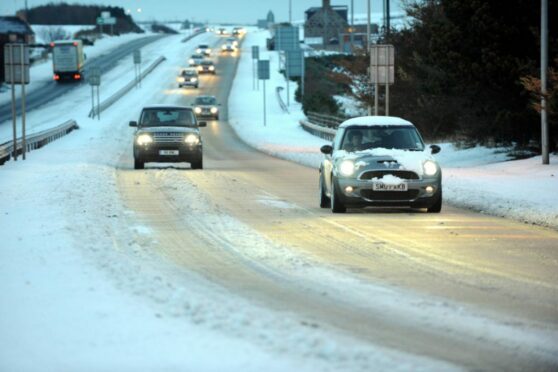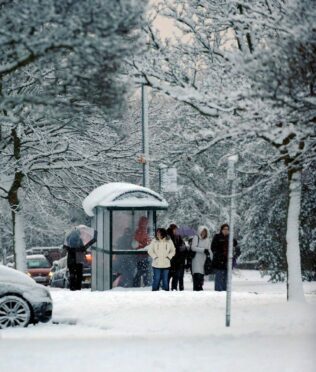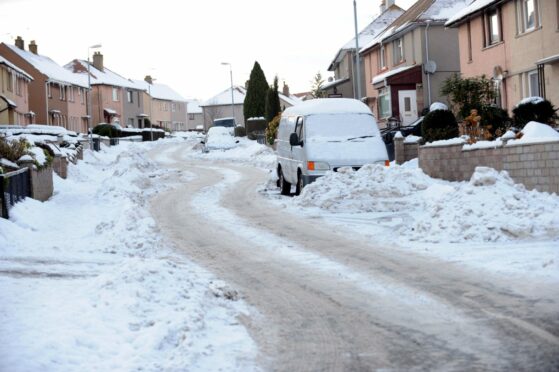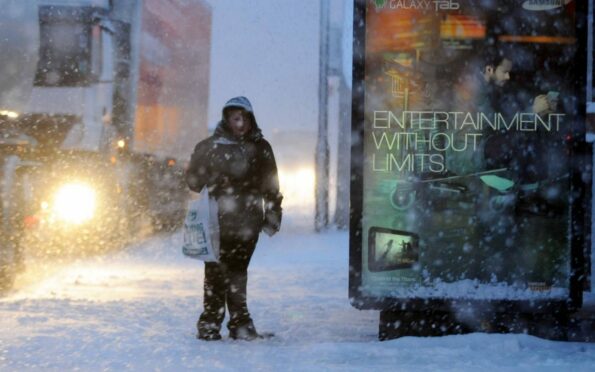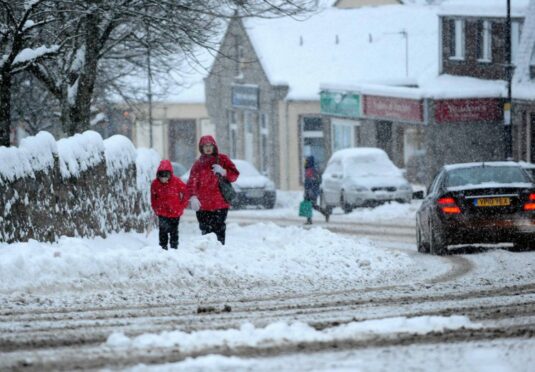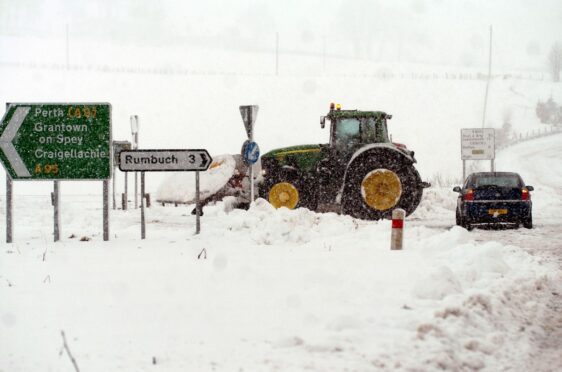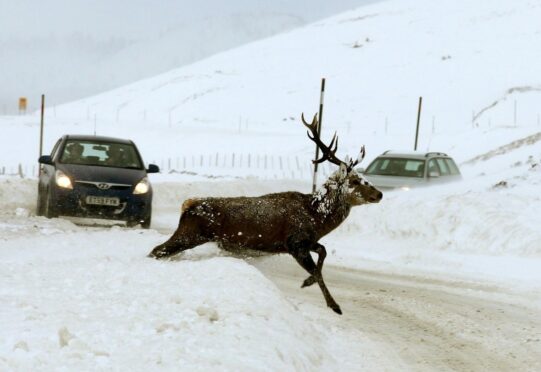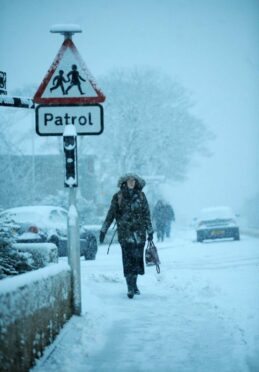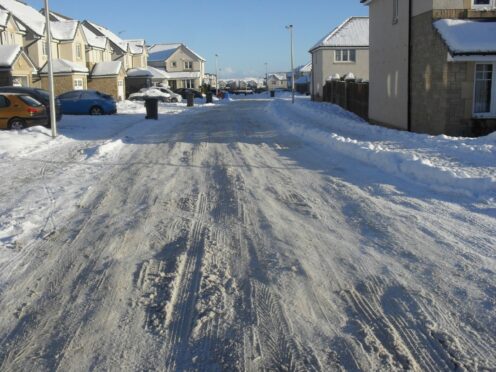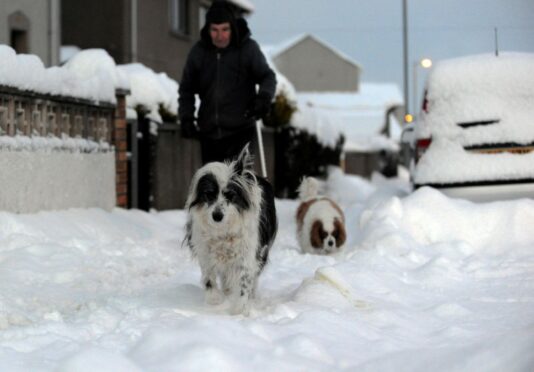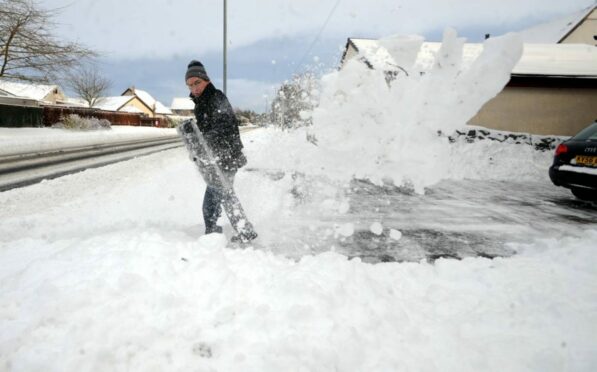Storm Arwen has devastated communities and caused the kind of catastrophic destruction not seen since the extreme ‘thundersnow’ weather phenomenon that swept the north-east 11 years ago.
Temperatures began to plunge at the end of November 2010, leading to the coldest December since Met Office records began.
But many Aberdonians will recall the cold snap that year also brought a rare weather event to the region – thundersnow.
The unusual phenomenon of thunder and lightning accompanied by snow occurs when freezing air moves over warm water.
The phenomenon was witnessed at Kinneff, near Stonehaven where residents reported seeing sheet lightning lasting for about half an hour during violent snowstorms.
The climactic conditions around Aberdeen and the North Sea late that November created the perfect storm.
But the chaos that ensued was less than perfect for many on November 28, with two to three hours of persistent snowfall in some areas following days of intermittent snow showers.
And some unlucky residents also reported being showered with golf-ball sized hailstones.
In scenes reminiscent of winters of yesteryear, inches of snow fell quickly across Aberdeen, with outlying areas in Aberdeenshire, Angus and Moray particularly badly affected.
The white stuff wreaked havoc across the whole region and continued for days.
The travel network ground to a halt with jack-knifed lorries, gridlocked roads and cancelled trains.
Aberdeen International Airport was forced to close its runway for a few hours due to dangers posed by drifting snow.
Meanwhile, thousands of homes lost power with engineers desperately working around the clock to restore electricity to rural communities.
And with four inches of snowfall in just a few hours, more than 120 schools in Aberdeen and Aberdeenshire were closed to pupils.
Residents hoping for respite and a thaw in the days after the thundersnow abated were left disappointed.
The temperature dropped as low as -8°C in some parts of inland Aberdeenshire, and the Met Office said in 2010 there was “no end in sight” during the unusually cold snap.
The chill continued into December and the average temperature that month for Scotland was -1°C (30°F).
As the poor weather continued, the impact was also felt on postal services during what is already a busy time of year for posties.
It wasn’t all misery, however, with many people – young and old – taking advantage of time off school, uni and work to enjoy snowing and sledging.
And there was great community spirit as people checked on elderly friends, neighbours and relatives.
A partial thaw in mid-December was followed by another cold front during the festive season, bringing more snow and ice, but with it came a white Christmas.
According to the Met Office, “the last widespread white Christmas in the UK was in 2010” and “was extremely unusual, as not only was there snow on the ground at 83% of observing stations (the highest amount ever recorded) but snow or sleet also fell at 19% of stations”.
This year, Aberdeen is the bookies’ favourite for a white Christmas in Scotland with odds of 7/4, so although the white stuff hasn’t lingered in the city this time, it could reappear in a few weeks’ time.
But that will bring little comfort to those in rural areas still suffering from the fallout of last weekend’s weather.
There has been an unprecedented impact on the power network with tens of thousands of homes still cut off the grid.
Storm Arwen may only have lasted a few hours and the initial snow chaos lasted a few days, but it could be weeks before some communities are fully connected and back to normal.
If you enjoyed this, you might like:
